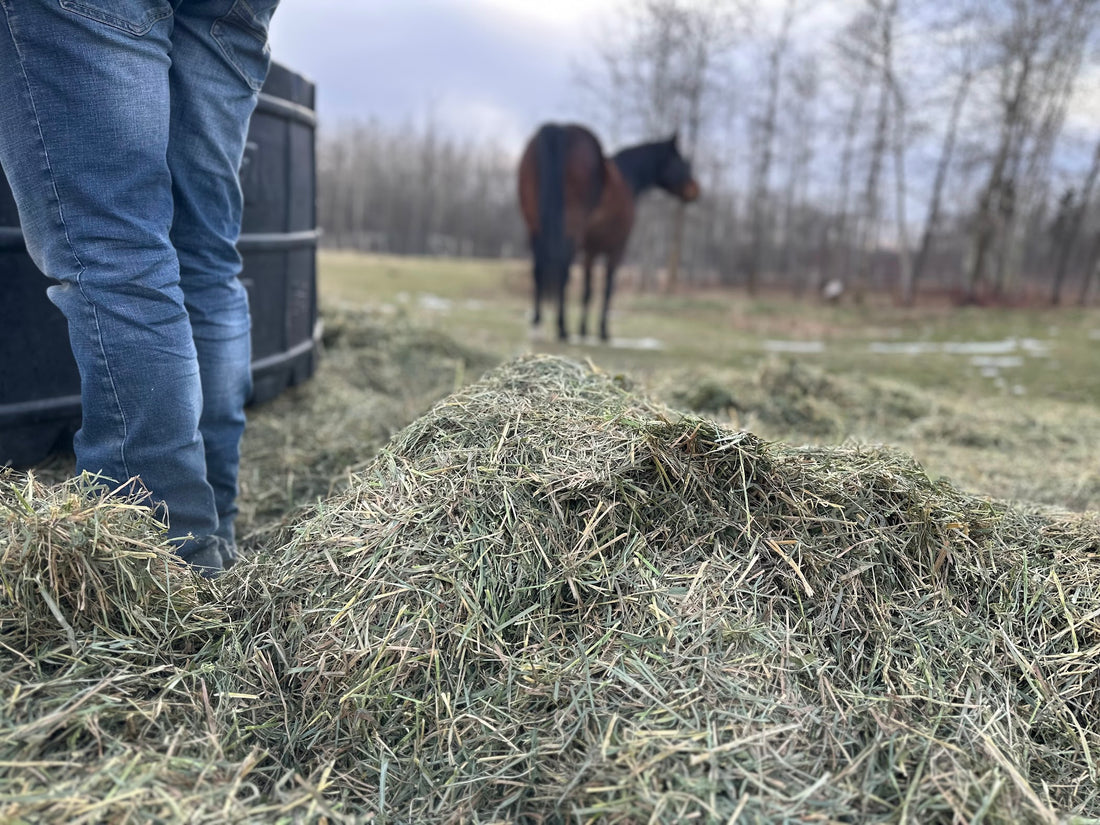11 Key Tips to Prevent Damage with Slow Feeder Nets

Nifty Tips to Prevent Damage to Horse Feeder Nets: A Comprehensive Guide
Understanding the Uncommon Yet Important Issue of Net Damage
You know the drill – you set up your horse’s feeder net, and it’s all smooth sailing until one day, you notice some wear and tear. It's not as common as some might think, but when it does happen, figuring out the "whys" and "hows" is crucial. Let’s start by addressing some overlooked reasons for this damage.
1. Choosing the Right Net Hole Size

The Key to Matching Needs with Hay Types Picking the right net hole size for your Poly Ring Feeder isn't just a matter of preference—it's about understanding the specific needs of your horse. Factors like their age, lifestyle, and the type of hay you use play a critical role in this decision. Let's explore how our net guide can help you find the perfect fit. Hay Net Sizing Guild.
2. Navigating Hay Changes
Easing Your Horses into New Hay Types Introducing new hay to your horses requires a delicate touch. Offering loose hay for a day allows for a smooth transition, helping your horses adjust both digestively and mentally. This gradual shift is key in reducing stress and preventing net damage.
3. Adjusting to New Pens
The Role of Loose Hay in New Environments Moving horses to a new pen can be stressful for them. To ease this transition, providing loose hay is essential. It helps your horses get comfortable in their new surroundings, especially when herd dynamics are in flux.
4. Welcoming New Herd Members
Smooth Transitions with Loose Hay Introducing new horses to an existing herd is a sensitive process. Offering loose hay for a day can help reduce competition and stress, fostering a peaceful integration and protecting your feeder.
5. Seasonal Change - Transitioning Back to Hay
Navigating the Switch from Pasture to Hay As seasons change, so do our horses' diets. When it's time to switch from pasture grazing back to hay, treat it like a fresh start with the net feeders.
 Give your horses a comfortable 3-5 days of free access to loose hay. This gradual approach helps them adapt without the stress of thinking food is scarce. It's a gentle reminder that there's plenty of hay to go around, making the transition smooth and keeping your Poly Ring Feeder safe from stress-induced damage.
Give your horses a comfortable 3-5 days of free access to loose hay. This gradual approach helps them adapt without the stress of thinking food is scarce. It's a gentle reminder that there's plenty of hay to go around, making the transition smooth and keeping your Poly Ring Feeder safe from stress-induced damage.
6. Ensuring a Constant Hay Supply
The Risks of an Empty Feeder A common mistake leading to feeder damage is letting it go empty. Horses can get pretty stressed and even a bit pushy with the feeder when they see it running low. To keep things smooth, aim to refill your Round Bale or Large Square Bale Slow Feeder before it dips below 15% capacity. This steady supply prevents the sense of scarcity that can lead to stress and feeder damage. It's all about keeping the hay flowing to maintain a calm and happy herd.
7. Managing Horses Inside at Night
Overnight Care for Your Horses Consistent Feeding Routine For horses that are stabled overnight, provide your horses hay before being put out in the morning, especially if they've gone a period without hay. This practice helps in maintaining a consistent feeding routine, which is essential for the physical and mental well-being of the horses.
8. Preparing the Bale Correctly
9. Removing the Outer Layer of the Bale
A Stress-Free Feeding Strategy Remove the thin outer layer of the bale before feeding. This simple step can significantly reduce stress for your horses and minimize the chance of feeder damage. This provides a stress-free period where horses can eat both loose hay and from the Slow Feeder. This practice significantly reduces the potential for damage and stress in horses.
10. Combating Freezing Temperatures
Preventing Net Stiffness and Damage Cold weather can stiffen the feeder net, making feeding challenging and potentially damaging the net. To prevent this, wash the net in the fall to remove acidity from hay, soil, dirt, and saliva. Additionally, if temperatures plummet, it is wise to supplement with additional loose feed if possible, to ensure easy access to forage.

11. Blanket Buckles and Safety Concerns
Proactive Prevention Blanket buckles can catch on the net, posing a risk of injury to the horse and damage to the feeder. Regular checks and maintenance is the best way to prevent this from occurring. Use either duct tape, electrical tape, or a buckle protector to cover blanket buckles. This simple precaution can significantly reduce the likelihood of accidents and damage.

